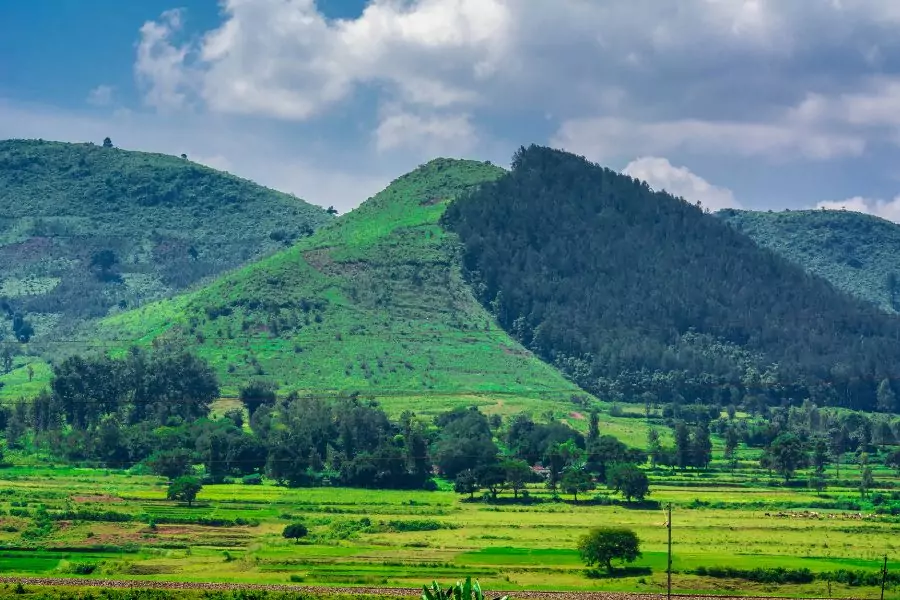Parmadan Forest – Bibhutibhushan Wildlife Sanctuary

Nestled in the serene landscapes of West Bengal, Parmadan Forest is a hidden treasure waiting to be explored. This lush forest, with its rich biodiversity and tranquil environment, offers a perfect escape from the hustle and bustle of city life. Whether you’re a nature enthusiast, a wildlife photographer, or simply seeking peace, Parmadan Forest has something to offer everyone. Let’s embark on a journey through this natural wonder and discover why it’s a must-visit destination.
History and Background
Parmadan Forest’s history is as rich as its biodiversity. The forest, also known as Bibhutibhushan Wildlife Sanctuary, was named after the famous Bengali author Bibhutibhushan Bandyopadhyay. Established to preserve the region’s unique flora and fauna, the sanctuary has become a crucial habitat for many species. The cultural significance of the forest is also noteworthy, as it plays a vital role in local folklore and traditions.
Location and Accessibility
Located in the North 24 Parganas district of West Bengal, Parmadan Forest is easily accessible by road and rail. The nearest major city, Kolkata, is just about 100 kilometers away, making it a convenient getaway for city dwellers. Visitors can take a train to Bongaon and then a short drive to the forest. Regular buses and taxis are also available, ensuring a smooth journey to this natural haven.
Biodiversity in Parmadan Forest

Flora: A Botanical Wonderland
Parmadan Forest is a botanical treasure trove, home to a diverse range of plant species. From towering Sal trees to delicate wildflowers, the forest’s flora paints a vibrant picture. The dense canopy provides shelter to various medicinal plants, which local communities have used for generations.
Fauna: Wildlife Haven
The forest’s rich biodiversity extends to its fauna, making it a haven for wildlife enthusiasts. Parmadan is home to several species of mammals, reptiles, and amphibians. The forest is particularly famous for its population of deer, including the spotted deer and barking deer. Visitors might also spot wild boars, porcupines, and the elusive fishing cat.
Endangered Species
Parmadan Forest plays a crucial role in the conservation of endangered species. The sanctuary’s efforts have provided a safe habitat for animals like the Indian python and the pangolin. Bird lovers will also be thrilled to spot various rare bird species, including the white-rumped vulture and the lesser adjutant stork.
Top Attractions and Activities
Nature Walks and Trails
Exploring Parmadan Forest on foot is an unforgettable experience. The forest offers several well-marked trails, each providing a unique view of the landscape. Guided tours are available, allowing visitors to learn about the local flora and fauna from knowledgeable guides.
Bird Watching

Bird watching is one of the most popular activities in Parmadan Forest. With over 200 species of birds, the forest is a paradise for ornithologists and casual bird watchers alike. Early mornings and late afternoons are the best times to spot species like the Indian roller, kingfishers, and various migratory birds.
Wildlife Photography
Parmadan Forest offers endless opportunities for wildlife photography. Whether you’re capturing the grace of a spotted deer or the vibrant colors of a butterfly, every moment in the forest is picture-perfect. Some of the best spots for photography include the riverbanks and open meadows.
Camping and Picnicking
For those looking to immerse themselves in nature, camping in Parmadan Forest is an excellent option. The forest has designated camping areas equipped with basic facilities. Picnicking is also a popular activity, with plenty of scenic spots to enjoy a meal amidst nature.
The Light and Sound Show
One of the unique attractions in Parmadan Forest is the Light and Sound Show. This captivating event showcases the history and natural beauty of the forest through a blend of storytelling, music, and visual effects. The show usually runs in the evening, and tickets can be purchased at the entrance.
Seasonal Beauty
Parmadan Forest’s beauty changes with the seasons, each offering a unique experience. The winter months, from November to February, are the best time to visit, with pleasant weather and vibrant birdlife. Spring brings a burst of color with blooming flowers, while the monsoon transforms the forest into a lush green paradise.
Accommodation and Facilities
Visitors to Parmadan Forest have several lodging options to choose from. Nearby resorts and guesthouses offer comfortable accommodations, ranging from budget to luxury. On-site amenities include guided tours, dining facilities, and equipment rentals for activities like bird watching and photography.
Local Culture and Cuisine
A visit to Parmadan Forest is incomplete without experiencing the local culture and cuisine. The nearby villages offer a glimpse into the traditional lifestyle of the region. Visitors can enjoy local dishes like fish curry, rice, and various vegetarian specialties. Interaction with the local communities adds a rich cultural dimension to the trip.
Conservation Efforts
Parmadan Forest is not just a tourist destination; it’s a vital conservation area. The sanctuary is involved in several projects aimed at preserving the local ecosystem. These efforts include anti-poaching measures, habitat restoration, and community education programs. Visitors can contribute by participating in eco-friendly activities and supporting local conservation initiatives.
Tips for a Sustainable Visit
To ensure Parmadan Forest remains a pristine haven for future generations, visitors are encouraged to practice sustainable tourism. This includes minimizing waste, respecting wildlife, and following designated trails. Carry reusable water bottles and bags, and avoid using plastic.
Safety Tips for Visitors
Safety is paramount when visiting Parmadan Forest. Visitors should wear comfortable clothing and sturdy footwear suitable for walking in the forest. It’s also advisable to carry insect repellent, a first aid kit, and sufficient water. Always follow the instructions of local guides and avoid venturing into restricted areas.
Nearby Attractions

Parmadan Forest is part of a larger region rich in natural and cultural attractions. Nearby places to visit include the Bibhutibhushan Wildlife Sanctuary and the historic town of Bongaon. Day trips can be arranged to explore these areas, providing a more comprehensive experience of the region.
Visitor Experiences and Testimonials
Many visitors to Parmadan Forest have shared their experiences, highlighting the forest’s tranquility and natural beauty. Testimonials often mention the friendliness of the local guides, the variety of wildlife, and the overall peaceful atmosphere. These stories provide a glimpse into what new visitors can expect.
Conclusion
Parmadan Forest is a true hidden gem, offering a perfect blend of natural beauty, rich biodiversity, and cultural experiences. Whether you’re looking for a peaceful retreat, an adventure in the wild, or a deeper connection with nature, Parmadan has it all. Take your camera and set out to explore this enchanting forest—you won’t regret it!
FAQs
1. What is the best time to visit Parmadan Forest?
The best time to visit Parmadan Forest is during the winter months, from November to February, when the weather is pleasant and the birdlife is abundant.
2. Are there guided tours available?
Yes, guided tours are available in Parmadan Forest. These tours are led by knowledgeable guides who provide insights into the local flora and fauna.
3. What wildlife can be seen in the forest?
Parmadan Forest is home to a variety of wildlife, including deer, wild boars, and a wide range of bird species. It is also possible to see endangered species like the Indian python and the pangolin.
4. Are there any accommodation options near the forest?
Yes, there are several accommodation options near Parmadan Forest, ranging from budget guesthouses to luxury resorts. Visitors can choose based on their preferences and budget.
5. How can visitors contribute to conservation efforts?
Visitors can contribute to conservation efforts by practicing eco-friendly tourism, participating in local conservation programs, and supporting initiatives aimed at preserving the forest’s biodiversity.


